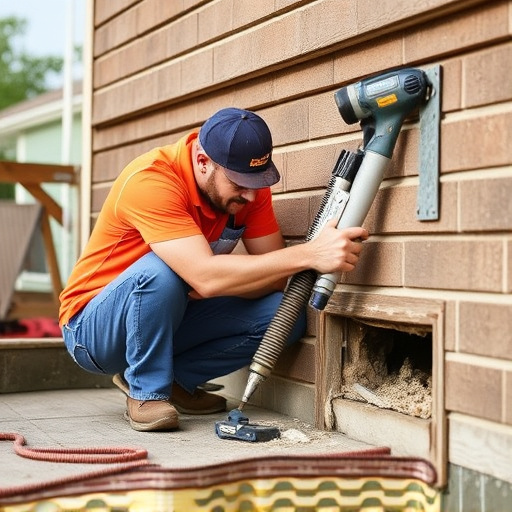Brick mortar repointing is a crucial home repair technique addressing both structural integrity and aesthetic appeal. Over time, environmental factors like water penetration and freeze-thaw cycles weaken mortar, leading to cracks and gaps that compromise wall stability. Regular repointing fills these gaps, enhancing weatherproofing, preventing water seepage, and protecting bricks from deterioration. Neglecting mortar can cause costly repairs from moisture intrusion, mould growth, and building material deterioration. Proper maintenance after repointing includes regular cleaning, addressing wear, and ensuring proper drainage to preserve the masonry's longevity.
Brick mortar repointing is a vital home repair that enhances structural integrity and weatherproofing. This age-old technique involves replacing deteriorated mortar between bricks, ensuring your home stands strong against the elements. Weatherproofing isn’t just about aesthetics; it prevents water damage, mold growth, and costly repairs down the line. Neglected brick mortar can compromise your home’s stability, so understanding repointing and following a step-by-step guide is essential for any DIY enthusiast or professional looking to maintain their property.
- Understanding Brick Mortar Repointing: The Basics
- Why Weatherproofing is Crucial for Your Home
- The Impact of Damaged Brick Mortar on Structure and Aesthetics
- Step-by-Step Guide to Successful Repointing
- Tips for Maintaining Your Repaired Brick Mortar
Understanding Brick Mortar Repointing: The Basics
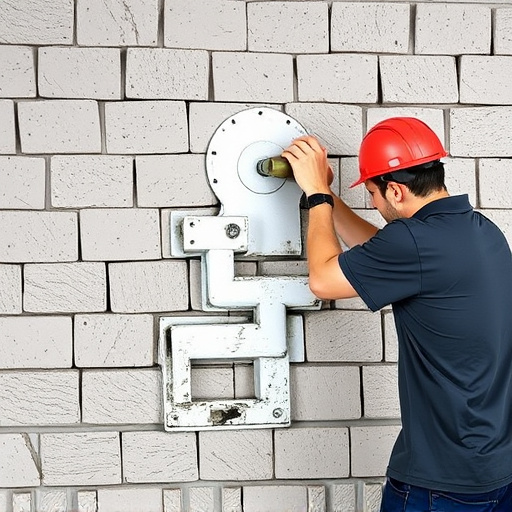
Brick mortar repointing is a crucial home repair technique that addresses the structural and aesthetic aspects of your property. It involves replacing or restoring the mortar between bricks, ensuring they remain tightly packed and protected from the elements. Over time, mortar can weaken due to water penetration, freeze-thaw cycles, and other environmental factors, leading to cracks and gaps that compromise the wall’s integrity.
During repointing, a professional will carefully remove the old, damaged mortar using tools like chisels or air compression. Once the space is cleared, new high-quality mortar is inserted, ensuring it matches the existing material in color and texture. This process not only enhances the structural stability of the wall but also improves weatherproofing, preventing water seepage and potential damage to the bricks beneath. For homeowners, regular brick mortar repointing is an essential component of maintenance, safeguarding against costly repairs down the line.
Why Weatherproofing is Crucial for Your Home
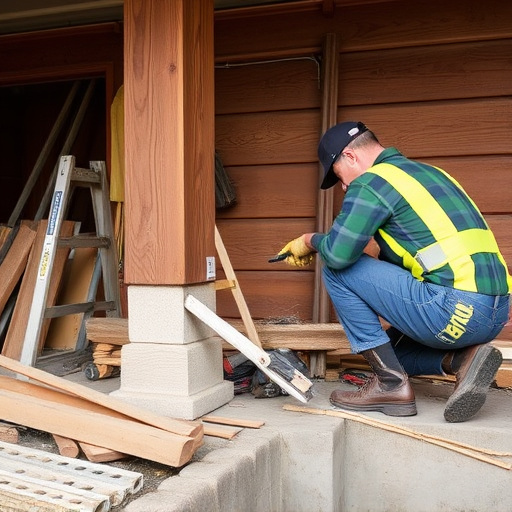
Weatherproofing plays a pivotal role in maintaining the structural integrity and longevity of your home, making it an essential aspect of home repairs. Without proper weatherproofing, homes become vulnerable to various environmental elements such as rain, snow, wind, and extreme temperatures. These elements can lead to significant damage over time, including moisture intrusion, mould growth, and deterioration of building materials.
By repointing or restoring the brick mortar, homeowners can enhance their home’s weatherproofing capabilities significantly. This process involves filling gaps and cracks in the mortar with new material, ensuring a tight seal between bricks. Such repairs not only improve the aesthetic appeal but also safeguard against water penetration, thus preventing costly repairs related to water damage, like rotted wood or weakened foundations. Effective weatherproofing is a proactive measure that ensures your home remains safe, comfortable, and well-protected for years to come.
The Impact of Damaged Brick Mortar on Structure and Aesthetics
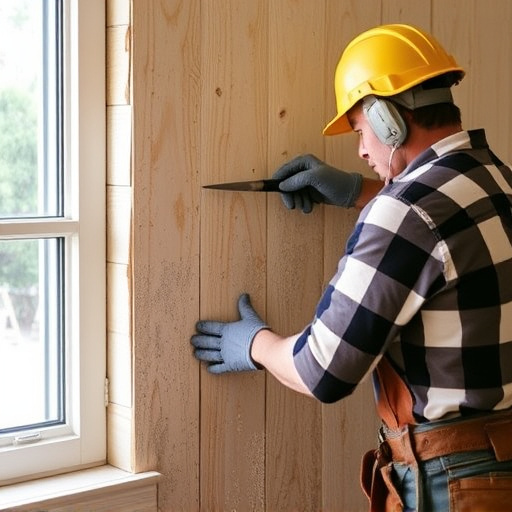
Damaged brick mortar isn’t just an aesthetic issue; it can significantly impact a structure’s longevity and stability. Over time, weather exposure weakens the bonds between bricks and mortar, leading to cracks, gaps, and loose stones. This deterioration not only compromises the building’s structural integrity but also allows moisture intrusion, which can cause rot in wooden frames, damage to insulation, and even mold growth—all of which are costly to repair and detrimental to a home’s value.
Moreover, neglected mortar can severely affect the curb appeal of a property. A once-sturdy facade becomes an eyesore with visible cracks and unevenness. Home repairs become necessary not just for structural reasons but also to maintain the building’s aesthetic appeal. Prompt repointing is key to preserving both the physical health of the structure and its visual appeal, making it an essential part of any home maintenance regimen.
Step-by-Step Guide to Successful Repointing
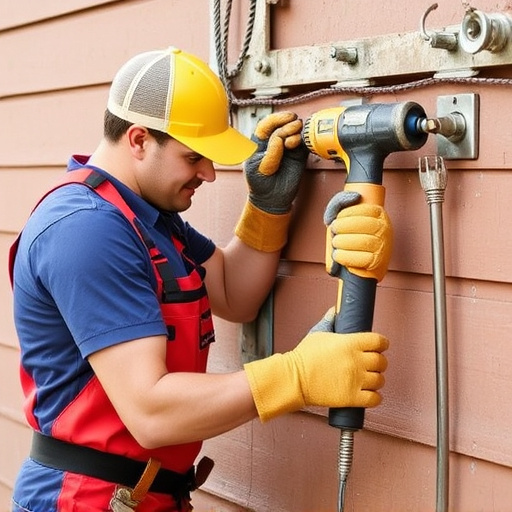
Home Repairs: A Step-by-Step Guide to Successful Repointing
The process of repointing brick mortar is a meticulous art that involves repairing and restoring the joints between bricks, enhancing both the structural integrity and weatherproofing of your home. It’s an essential Home Repair task that can prevent damage from water penetration and ensure your masonry remains robust for years to come. Begin by assessing the condition of your mortar, identifying gaps or loose pieces. Next, gather your tools: a hammer, chisel, brick trowel, new mortar mix, and protective gear. Carefully remove the old mortar from the joints using the chisel and hammer, taking care not to damage the bricks. Once the joint is clean, measure and apply the new mortar using the trowel, ensuring it fills the space evenly. After smoothing the surface, let the mortar set according to the manufacturer’s instructions before removing any excess with a damp sponge.
Tips for Maintaining Your Repaired Brick Mortar
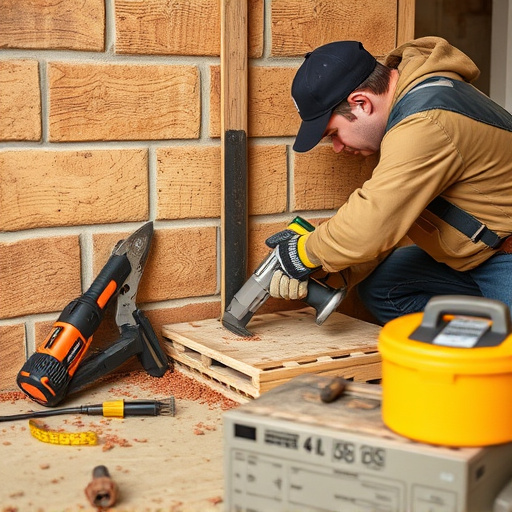
After completing your brick mortar repointing, proper maintenance is key to preserving the work and ensuring its longevity. One of the most important steps is regular cleaning. Use a soft brush or sponge to gently remove any dirt, debris, or mold that may accumulate on the repaired areas. Avoid aggressive cleaning methods that could damage the fresh mortar.
Additionally, keep an eye out for any signs of wear or new cracks. Regularly inspect your home’s exterior, particularly around windows and doors, where moisture can pool. Promptly address any issues to prevent further damage. Moisture is a brick mortar’s enemy, so ensure proper drainage around your home, directing water away from the walls. This simple step will go a long way in maintaining the integrity of your repointed mortar, keeping your home protected from the elements for years to come. Remember, regular care and attention are essential components of successful home repairs.
Brick mortar repointing is a vital home repair that not only enhances your property’s aesthetic appeal but also plays a crucial role in maintaining its structural integrity. By addressing damaged mortar, you ensure your home stays weatherproof, preventing water damage and supporting the long-term stability of your walls. With the right tools and techniques, as outlined in this guide, tackling repointing yourself can be a rewarding do-it-yourself project. Remember, regular maintenance, including periodic checks and timely repairs, is key to preserving your home’s value and protecting it from costly structural issues down the line.
